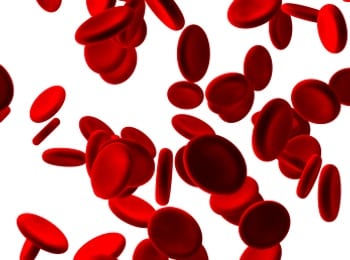Editor’s note: This post has been edited from its original to reflect changes in 23andMe’s product.

Sometimes you can have too much of a good thing.
Stem cells in your bone marrow are responsible for producing red and white blood cells and platelets. But in cases of myeloproliferative neoplasm (MPN) the stem cells go overboard and begin producing too many of one type of cell. There are several types of MPN — polycythemia vera, essential thrombocythemia and primary myelofibrosis. While all are treatable, these conditions put the approximately 140,000 people in the United States who are affected at higher risk for blood clots and leukemia.
In 2005 researchers discovered that a mutation in the JAK2 gene, called V617F, is responsible for almost all cases of polycythemia vera and about half of all cases of essential thrombocythemia and primary myelofibrosis. People are not born with this mutation, but instead develop it in their bone marrow cells sometime later in life. Now, three new research reports show that while the JAK2 V617F mutation itself is not passed down from parent to child, there is an inherited genetic predisposition for developing this mutation and, therefore, MPN. These findings, published online yesterday in the journal Nature Genetics, have implications not just for this collection of blood disorders, but for the way scientists think about the genetics of diverse types of cancer.
Three separate research groups (their papers can be found here, here and here) found that, in people with European ancestry, the V617F mutation is more likely to occur in copies of the JAK2 gene that contain the C version of . One of the studies found that 80% of V617F mutations occur in the context of a C at this SNP.
Based on their findings, the researchers behind all three studies say that the odds of developing JAK2 V617F-positive MPN are increased in people with one or two Cs at . Although the exact increase varied between studies, it appears that there are at least three times greater odds of the disease in people with the riskier version of the SNP.
The authors of all three studies suggest that the C version of may somehow make the JAK2 gene more susceptible to mutation. It is also possible that the V617F mutation is equally likely to occur in all versions of the JAK2 gene, but something about the C version of causes the mutation to actually cause MPN.
Regardless of how is affecting the JAK2 gene, the authors of all three reports conclude that their results have important implications not just for understanding MPN. They all suggest that many of the genetic variations that have been found to be associated with increased cancer risk may in fact be acting by increasing the odds of later-in-life mutations.